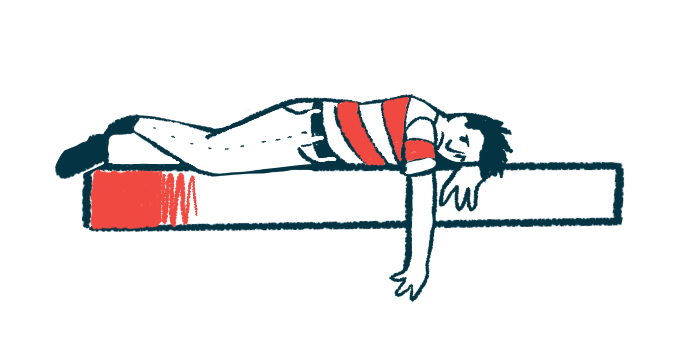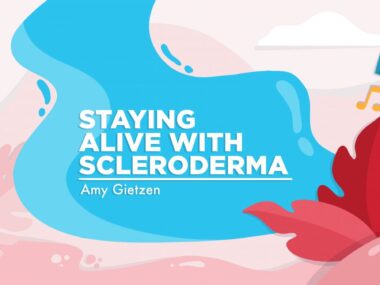FAME-iSS Program Lessens Fatigue, Helps Manage ‘Overlooked’ Symptom
Written by |

The Fatigue and Activity Management Education in Systemic Sclerosis program — known as FAME-iSS — lessened fatigue and increased the use of strategies for managing what researchers called “one of the most prevalent and disabling symptoms of systemic sclerosis,” a small study reported.
FAME-iSS involves group sessions led by occupational therapists and attended by people with scleroderma, or systemic sclerosis (SSc), who experience fatigue. Its aim is to help patients learn about and discuss factors that increase fatigue as well as find ways to implement new strategies to manage its impact.
The study, “Fatigue and activity management education for individuals with systemic sclerosis: Adaptation and feasibility study of an intervention for a rare disease,” was published in the journal Musculoskeletal Care.
Fatigue is a common yet overlooked symptom of SSc and other musculoskeletal diseases, according to the researchers. Studies have shown that various types of non-pharmacological treatments effectively reduce fatigue in people with similar conditions. However, there are no fatigue-related programs tailored explicitly to SSc.
One program for combatting fatigue, called FAME, was developed for individuals with lupus, an inflammatory disorder that affects multiple organs.
Participants in FAME complete six in-person group sessions in which they are encouraged to share past experiences with fatigue management strategies and problem solve how to implement new techniques. The group members then motivate one another to accomplish selected goals.
Analysis showed that FAME significantly improved mood and quality of life, as well as activity participation in people with lupus. It also was found to give patients a better understanding of fatigue in lupus.
Now, researchers in Ireland and the U.S. adapted FAME to individuals with SSc, and renamed it FAME in Systemic Sclerosis, or FAME-iSS. This feasibility study was conducted to determine the program’s impact on SSc patients.
Four individuals diagnosed with SSc, who self-reported the presence of fatigue, were sent copies of the FAME-iSS handbook and attended six online sessions. In advance of the sessions, the participants — who had an average age of 51.8 and an average disease duration of 12 years — completed a range of questionnaires.
The first session provided an overview of the program, defining self-management, the relationship between factors that affect fatigue, and the fundamentals of goal setting. The remaining five sessions, which were interchangeable, focused on energy management, physical activity, pain management, stress management, and pain.
At the end of the sixth session, participants attended a focus group discussion to offer their opinions on the content and relevance of FAME-iSS, and provided ideas for implementation and areas for improvement.
At post-intervention and at a three-month follow-up interview conducted by phone, participants were asked to evaluate FAME-iSS and complete the Energy Conservation Strategies Survey (ECSS). That survey determined whether they had implemented the new strategies, and how often, and their perceived effectiveness to reduce fatigue.
When asked whether the program adaptations and online delivery were acceptable, participants rated high levels of satisfaction — median score of 5/5 — on all questions related to FAME-iSS content and delivery.
“I felt very comfortable, and it was easier for me rather than going out and trying to meet… I like that it’s a smaller group because you don’t feel so outcast,” wrote one participant. “It’s almost the perfect group size, 10 and under… I could see people’s expressions and not feel like I’m ignoring somebody.”
Regarding the interactive discussions, another patient said that other groups “tend to speak at you or they show you videos and discuss topics but there’s not a lot of personal interaction as far as other people’s experiences, where I felt with this, there was and that was helpful.”
Based on focus group sessions and individual interviews, a list of program strengths and areas of improvement were provided. Overall, participants thought the program was helpful, particularly to revisit information they already knew but were not actively applying.
“Some of the information that you gave is important because we know things are going on, but we can’t explain it,” a participant said. “And then when you see, ‘Well, if you do these two things, that’s why this happens.’ Instead of just thinking, ‘Why did this happen?’”
Some participants, however, stated they were likely to adopt fewer strategies because “people who have had [SSc] for a long time have already adjusted their behaviours; it’s hard to change them.”
Participants discussed how expanding the group to include those with diverse experiences, such as newly diagnosed individuals, may be beneficial: “if you had a few more people, maybe there would be more goals that you can get ideas about and try.” Lastly, participants said the section on nutrition was the least helpful due to unique gastrointestinal symptoms and wondered if others would feel the same.
Based on questionnaires conducted before the sessions, post-intervention, and at the three-month follow-up, there were non-significant improvements in all measures, especially in the total scores from the Multidimensional Assessment of Fatigue and Self-Efficacy for Performing Energy Conservation Strategies Assessment.
Between post-intervention and follow-up, three of the six measures demonstrated a decrease in fatigue impact and depression, as well as improved efficacy for managing symptoms.
The ECSS completed after the sessions reflected a range of energy conservation strategies recommended by FAME-iSS. At post-intervention, all 14 strategies were implemented by two participants and seven strategies by three individuals.
At follow-up, three strategies were used by one participant. Effectiveness scores for energy conservation post-intervention ranged from five to the maximum of 10 and from two to nine at follow-up.
All participants noted that the pacing of these energy conservation strategies was a significant addition to their regular routines.
“I’m planning my day better. I know the first half of the day I’m better and by afternoon I go downhill. So, I’m trying to prioritize my day,” wrote a participant.
Said another, “If I over-exercise, if I walk too far, if I do too much in one day, [the fatigue] is definitely worse the next day. So, there’s a balance that you have to find.”
Participants also provided reasons for a decline in strategy use from post-intervention to the three-month follow-up, including COVID-19 pandemic restrictions and disruptions in routines, such as moving their residence, unanticipated surgeries, and holidays.
“Our feasibility study showed that the content and virtual format of FAME-iSS was acceptable and received positively by people with SSc,” the scientists concluded. “FAME-iSS led to improvements in fatigue and increased use of strategies to manage fatigue.”
“Future studies will further examine the feasibility and effectiveness of FAME-iSS,” they added.
The Scleroderma Foundation and its chapters helped in recruiting the patients for this study.






